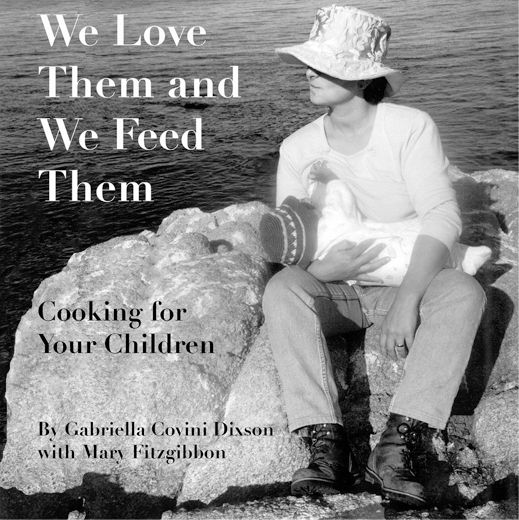 We Love Them
We Love Them
and We Feed Them Cooking for Your Children GABRIELLA COVINI DIXSON with MARY FITZGIBBON Copyright 2015 GABRIELLA COVINI DIXSON with MARY FITZGIBBON. All rights reserved. No part of this book may be reproduced, stored, or transmitted by any meanswhether auditory, graphic, mechanical, or electronicwithout written permission of both publisher and author, except in the case of brief excerpts used in critical articles and reviews. Unauthorized reproduction of any part of this work is illegal and is punishable by law. ISBN: 978-1-4834-2332-6 (sc) ISBN: 978-1-4834-2331-9 (e) Because of the dynamic nature of the Internet, any web addresses or links contained in this book may have changed since publication and may no longer be valid. The views expressed in this work are solely those of the author and do not necessarily reflect the views of the publisher, and the publisher hereby disclaims any responsibility for them.
Any people depicted in stock imagery provided by Thinkstock are models, and such images are being used for illustrative purposes only. Certain stock imagery Thinkstock. Lulu Publishing Services rev. date: 11/30/2015 CONTENTS Chapter 2 Food Combinations and Family Table
7-9 Months Chapter 3 Establishing a Richer Palate
And Some Table Manners
10-15 Months Chapter 4 Cooking Up Some Tasty Complex Proteins
16-21 Months Chapter 6 Eating Like a Big Kid
2-3 Years  To my Patatina Corina who taught me that are many ways to feed a child. The recipe is authenticity A family jamboree fills my memory Loose laughs and tight tears, It tastes good try some, here! Italian or Swiss, my dear Corina could not finish Let the battle begin, unfortunately no one would win Almost a slaughter between Mother and daughter But if the food was just right, there would be no fight Pleasing Corinas appetite became my plight I dedicate this book to my second child The trip has been wild, but always worthwhile. Poem by Tito Dixson Photographs Courtesy of Michael Bellino, Sandra Fazzino
To my Patatina Corina who taught me that are many ways to feed a child. The recipe is authenticity A family jamboree fills my memory Loose laughs and tight tears, It tastes good try some, here! Italian or Swiss, my dear Corina could not finish Let the battle begin, unfortunately no one would win Almost a slaughter between Mother and daughter But if the food was just right, there would be no fight Pleasing Corinas appetite became my plight I dedicate this book to my second child The trip has been wild, but always worthwhile. Poem by Tito Dixson Photographs Courtesy of Michael Bellino, Sandra Fazzino
and our sweet San Francisco friends and families.
In We Love Them and We Feed Them, Ms. Covini Dixson recommends organic foods. Why? A number of food additives are thought to worsen ADHD, and many have subsequently been banned in Europe. Potential culprits to avoid include Blue #1 and #2 food coloring; Green #3; Orange B; Red #3 and #40; Yellow #5 and #6; and sodium benzoate, a preservative. Recent research also shows that glyphosate, the active ingredient in Monsantos Roundup herbicide, used in large quantities on genetically engineered Roundup Ready crops, limits your bodys ability to detoxify foreign chemical compounds. As a result, the damaging effects of those chemicals and environmental toxins are magnified, and may result in a wide variety of diseases, including brain disorders that can affect behavior.
These organic, simple and delicious recipes will go a long way in effecting your childs health. Happy Eating! Dr. Terrence Stackwood Chiropractor Live Fit Wellness 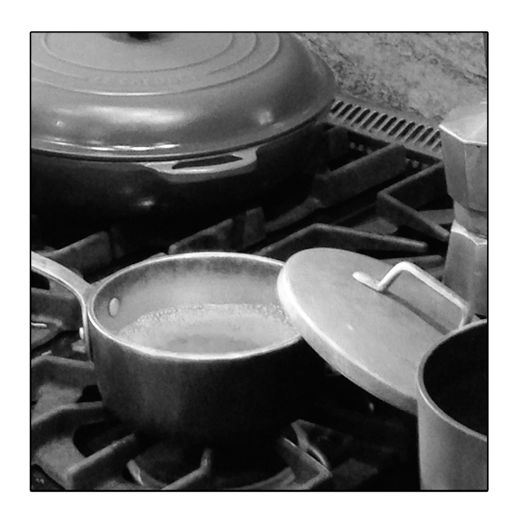 Welcome to the delightful and adventurous world of feeding your baby and toddler healthy simple home cooked meals. We know that you are going to have many happy and delicious food experiences with your child as you follow these wholesome recipes, which are steeped in tradition, and prepared with lots of love. What better way to express deep love and care for your child than by cooking for her and getting her started on a healthy food plan that will last her whole life? Our philosophy is founded upon actually feeding your child. Why? Our culture is often intent upon keeping up the busy pace of work and life and many moms and dads put an assortment of food on a tray (in the spirit of love and independence) for baby to eat or mash or throw on the floor.
Welcome to the delightful and adventurous world of feeding your baby and toddler healthy simple home cooked meals. We know that you are going to have many happy and delicious food experiences with your child as you follow these wholesome recipes, which are steeped in tradition, and prepared with lots of love. What better way to express deep love and care for your child than by cooking for her and getting her started on a healthy food plan that will last her whole life? Our philosophy is founded upon actually feeding your child. Why? Our culture is often intent upon keeping up the busy pace of work and life and many moms and dads put an assortment of food on a tray (in the spirit of love and independence) for baby to eat or mash or throw on the floor.
Who knows how much she actually eats? How much nutrition is she actually getting? This cookbook is more than just a collection of robust recipes; it is a methodology of eating that has proven results. Eating and table training is paramount to a life of healthy food consumption. To help you get started here are some helpful suggestions:
- Before you begin using this book please consult your pediatrician.
- Introduce your baby to a spoon immediately. Spoon-feeding is an essential part of making sure your child gets all the benefits from the food youve prepared.
- Always serve fresh warm food. The food should feel warm, but not burn your wrist.
- Use organically grown fruits and vegetables when ever possible.
- In the beginning keep the meals small and simple. Your baby will continue to get most of his/her nourishment from either breast milk or formula.
- Do not add salt to the food for the first year of feeding.
- Introduce new food slowly.
Allow the baby to eat one or two spoonfuls the first day, increasing to four or five spoonfuls by the end of the first two weeks. Some babies can develop allergies to certain foods and introducing food slowly can keep reactions to a minimum. If you notice any reactions discontinue the particular food and consult your pediatrician.
- Introduce cereal or grains one at a time for the first year.
- Use good quality oil. Olive oil and sunflower oil can be added to almost anything. If the food is too thick it can be used to make it smooth.
BAKING Term used to describe food cooked in the oven. BOILING and SIMMERING Even though many of the recipes call for food to be brought to a boil, very few are cooked by continuous boiling.
Exceptions include pasta and some grains. When boiling, the pan is always left uncovered. SIMMERING A point where the bubbles are breaking gently on the surface of the liquid. PRESSURE COOKING Traps the steam within the locked lid, the results are similar to steaming. When adapting recipes from conventional methods to pressure cooking you can use less liquid and cut the cooking time by 1/3. If you are using a pressure cooker, do not fill above 2/3 level.
Pressure cookers vary so check the book that comes with your pot. STEAMING A gentle way to cook, allowing the food to retain most of its natural juices and nutrients. Keep the water about an inch below the bottom of the steamer and steam over moderate heat always with the lid on the pot. SAUTE Cooking in a small amount of oil and butter in an open shallow pan. The pan and the fat should be hot before adding the food, cooking quickly and moving the food around. BLENDER A small, inexpensive blender works well for the first year.
By the second year the quantities are getting larger and a bigger blender will work better. COFFEE GRINDER Needed to grind rice, grains and nuts. FOOD MILL This tool has 3 different sized interchangeable discs that will puree cooked food. PRESSURE COOKER Many domestic varieties on the market. Choose a medium size and read all the instructions before using as all brands differ slightly. STEAMER Come in many varieties and sizes from inserts for your saucepan to double pots.
Cheesecloth can be used on top of your steamer. Insert it to prevent the smaller grains from falling through. SAUCEPAN 1-1/2 quart small and one 2-1/2 quart medium heavy, non-stick saucepans. Millet Soak overnight in warm water. Cook 1 cup in 2-1/2 cups of water. 1 cup of raw millet yields 4 coups when cooked. 1 cup of raw millet yields 4 coups when cooked.
Couscous Soak overnight in warm water. Cook 1 cup in 1-1/2 cups of water. Boil or steam for 30 minutes. 1 cup of raw grain yields 3 cooked cups. White Rice Cook 1 cup of rice with 1 cup of water. 1 cup of raw grain yields 2 cups when cooked. 1 cup of raw grain yields 2 cups when cooked.
Next page
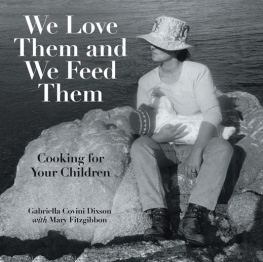



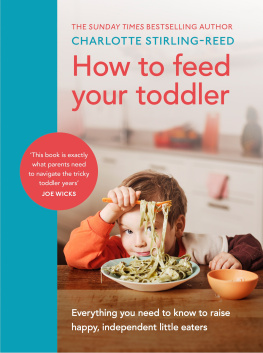
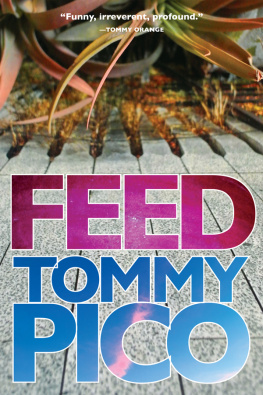

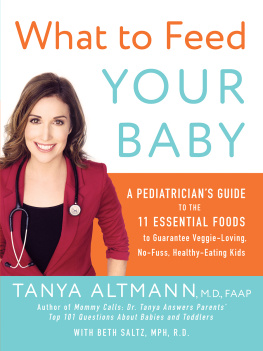

 We Love Them
We Love Them To my Patatina Corina who taught me that are many ways to feed a child. The recipe is authenticity A family jamboree fills my memory Loose laughs and tight tears, It tastes good try some, here! Italian or Swiss, my dear Corina could not finish Let the battle begin, unfortunately no one would win Almost a slaughter between Mother and daughter But if the food was just right, there would be no fight Pleasing Corinas appetite became my plight I dedicate this book to my second child The trip has been wild, but always worthwhile. Poem by Tito Dixson Photographs Courtesy of Michael Bellino, Sandra Fazzino
To my Patatina Corina who taught me that are many ways to feed a child. The recipe is authenticity A family jamboree fills my memory Loose laughs and tight tears, It tastes good try some, here! Italian or Swiss, my dear Corina could not finish Let the battle begin, unfortunately no one would win Almost a slaughter between Mother and daughter But if the food was just right, there would be no fight Pleasing Corinas appetite became my plight I dedicate this book to my second child The trip has been wild, but always worthwhile. Poem by Tito Dixson Photographs Courtesy of Michael Bellino, Sandra Fazzino Welcome to the delightful and adventurous world of feeding your baby and toddler healthy simple home cooked meals. We know that you are going to have many happy and delicious food experiences with your child as you follow these wholesome recipes, which are steeped in tradition, and prepared with lots of love. What better way to express deep love and care for your child than by cooking for her and getting her started on a healthy food plan that will last her whole life? Our philosophy is founded upon actually feeding your child. Why? Our culture is often intent upon keeping up the busy pace of work and life and many moms and dads put an assortment of food on a tray (in the spirit of love and independence) for baby to eat or mash or throw on the floor.
Welcome to the delightful and adventurous world of feeding your baby and toddler healthy simple home cooked meals. We know that you are going to have many happy and delicious food experiences with your child as you follow these wholesome recipes, which are steeped in tradition, and prepared with lots of love. What better way to express deep love and care for your child than by cooking for her and getting her started on a healthy food plan that will last her whole life? Our philosophy is founded upon actually feeding your child. Why? Our culture is often intent upon keeping up the busy pace of work and life and many moms and dads put an assortment of food on a tray (in the spirit of love and independence) for baby to eat or mash or throw on the floor.